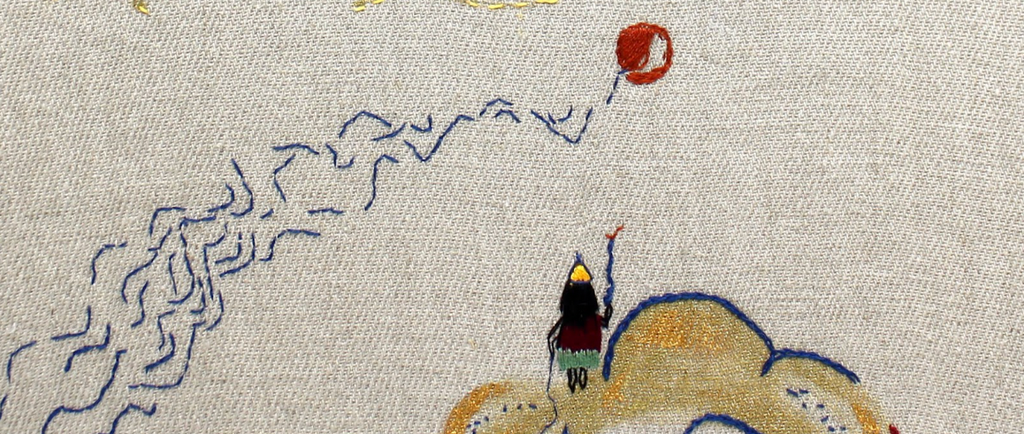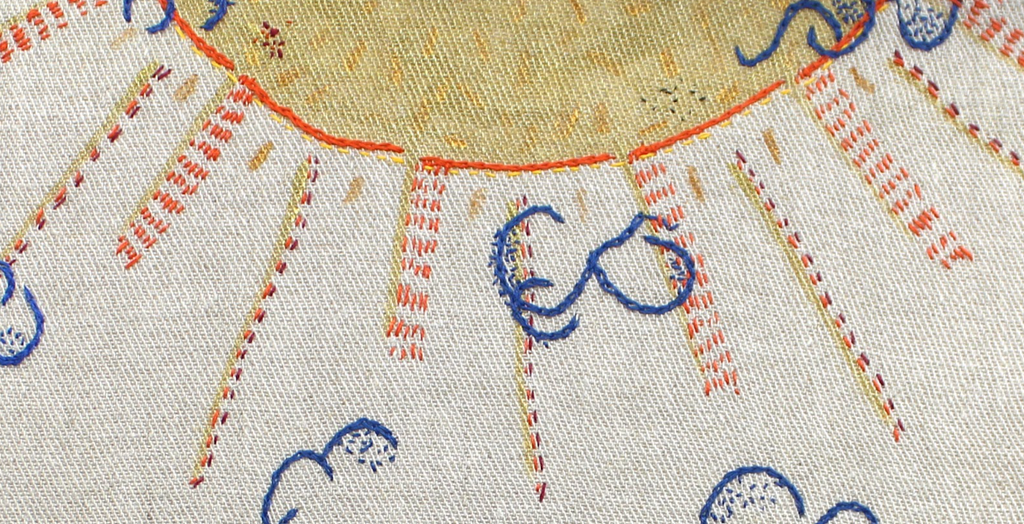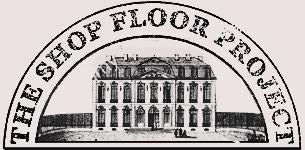
Product Details
Original framed linen, cotton thread and paint embroidery piece by Saima Kaur.
Unframed Artwork Size: 31 x 43 cm (12.2" x 16.9")
Framed Size with mount: 52.3 x 63.8cm (20.6" x 25.1")
Available in three frame choices:
Ash (solid wood) with mount
White (solid wood) with mount
Black (solid wood) with mount
Please note: Our framers are recognised by the Fine Art Trade Guild for their quality because the custom frames have tightly pinned corners, and are made from precision cut wood in England, made bespoke for each order. All our frames are glazed with our Clarity+ Perspex. It's cut from the highest quality acrylic sheet that's both crystal clear, but also safe and filters out 99% of UV light to protect the artwork.
Read more about our FRAMING WORKSHOP here
THE STORY
“I see each piece as a miniature world with characters who hold a particular emotion. My hope is to express that in some quiet way.”

The Shop Floor Project has commissioned British Indian artist Saima Kaur to create a third collection of her unique embroidered artworks inspired by 19th and 20th century phulkari; a type of traditional hand-stitched ‘folk embroidery’ from the Punjab.

Over the year, the collection has been slowly unfolding through a collaborative process; discussing ideas, materials, colours and design. Most of all, we have been intrigued by Kaur’s mysterious figures and unusual compositions. The expression of feeling she can achieve through the use of thread and paint is extraordinary.

Kaur’s work tells stories, but they are fragments which invite the viewer to follow a thread that leads somewhere or nowhere. Stitching together a story of a larger embroidery in our imagination, we can only see remnants of the whole; figures on the edge of golden clouds, mysterious monkeys and a tiny figure eating fruit in a tree, a flying carpet. There is a narrative, but one that’s not fully in focus, a tantalising world to get lost within.

A surprise marriage gift from her grandmother in the form of a hand-stitched phulkari, led Kaur to a deep curiosity into these Punjabi textiles which have become on ongoing source of inspiration for her own work:

"Phulkari are passed through the generations as symbols of love, lineage and memory. As a personal example, prior to my own marriage, my paternal grandmother quietly ushered me into the family home’s storeroom and opened up an enormous steel trunk. Out came two phulkari that her mother had made for her marriage and which she was now passing onto me.

“What I adore and take most from these phulkari, is their creation of non-hierarchical worlds. Here people, objects and patterns hold equal place with a wonderful interplay between the symbolic, imagined and the real.”

The tiny embroidered dots, dashes, circles, flowers and geometric patterns that can be seen in phulkari textiles are sewn into Saima’s work, floating around the embroidery like seeds on the wind or water flowing from clouds.

Inspiration for this collection was also found in the figures of 19th century Bengali Kalighat paintings. These works explored Hindu mythology and delivered social commentary to a mass market in 1800’s India.

Saima says it was the ‘fullness and curves of the figures’ that appealed to her for this collection and their influence can be seen in works such as The Flower Thief (below)

Elemental forces are never far away from Saima’s work, in fact she cites the drama of the monsoon as a constant source of inspiration, nestled deep within her memory.

Saima begins the process by drawing out and painting sections directly onto the prepared fabric.

She then begins ‘sketching in thread’, a process seen on some phulkari where the white thread in sketchy outlines could still be traced. Tacking the shapes in thread allows Saima to work out her complex compositions, exploring and playing with dimensions and proportions.

























